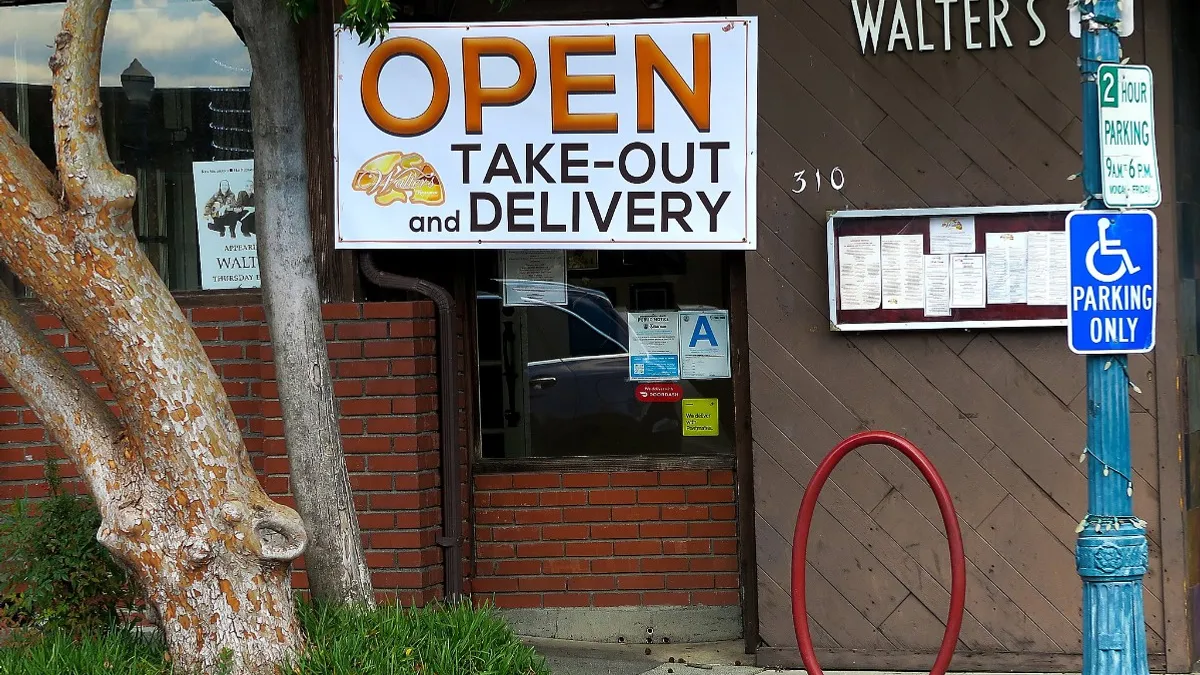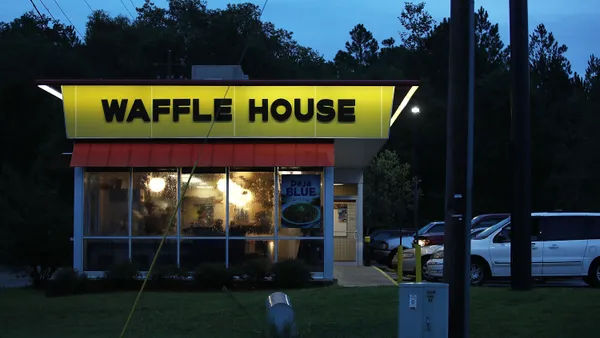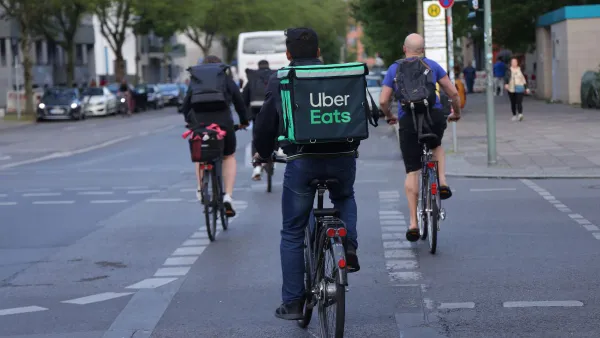Dive Brief:
- Prior to COVID-19, average comp sales among restaurant chains in January and February were 2.2% and 0.3%, respectively, and dine-in sales were at 0.1% and negative 1.1%, respectively, according to Black Box Intelligence data shared during the Restaurant Rise virtual conference on Wednesday. To-go sales for January and February were up 7% and 5.8%, respectively. The data represents more than 15,000 restaurants across 300 chain companies that work with Black Box Intelligence.
- During COVID-19, dine-in sales declines peaked at a negative 99.3% in April, improving to a negative 88.4% in May. To-go sales, on the other hand, increased by 66.8% in April and 96.4% in May.
- Third-party delivery adoption grew significantly from March 13 through April 13 compared to the same period a year ago. For chains and independents that adoption grew about 36% while limited-service adoption grew 64.1%. Full-service chains had the biggest jump in adoption at 104.8%.
Dive Insight:
In January and February, with improved weather compared to last year, restaurant traffic and sales growth was the best they had been in several years, Kelli Valade, Black Box Intelligence CEO and president, said during the webinar.
“We saw a lot of recovery happening early on in 2020, until the pandemic hit,” she said, adding check averages were also decreasing, which typically indicates that traffic is improving.
But even with industry sales bottoming out in April, they started to improve when restaurants began to reopen. Checks began to grow thanks to delivery fees raising ticket averages and new offerings like family meals, she said, adding that check growth from delivery fees won't be sustainable long term.
“Everything that was lost in the way of dine-in sales, in some cases, was made up by ... to go and off-premise,” Valade said.
Fine dining had one of the bigger transitions to off-premise sales, growing from about 13% and 14% of total sales to as high as 60% to 70%. Guest sentiment scores also improved in May compared to April for this segment, especially when guests ordered takeout or curbside pickup, Valade said.
“It perhaps just cemented the belief for new customers that this could be a good option … to get a great meal … from a full-service provider or even an upscale provider in the face of not having a lot of other choices,” Valade said. “I think this will stay.”
Off-premise could provide some lifeline going forward for many fine dining chains, especially since the segment had the worst average comp sales in the industry, averaging a negative 77% in May, compared to an increase of 6% for quick service, which benefited from drive-thrus. Quick service and limited service, which declined comp sales by an average of 20% in May, also benefited by offering complete family meals including sodas and desserts.
“You really saw that fine dining and casual dining [were] really not able to capture that especially with... not being able to sell alcoholic beverages, even when some states loosened up on their requirements,” she said. “You just still didn't see it make a big, big difference. It's really about people being in your bars and being in a restaurant and ordering alcohol.”
The full-service chains that have started to reopen their dining rooms are starting to bounce back. The Cheesecake Factory, which had 25% of its concepts open as of June 2, reported about 75% of prior year sales levels at reopened restaurants, although off-premise continues to bolster dine-in sales. But the impact of off-premise will decline over time.
At the height of the pandemic, off-premise had a run rate of 200% growth year over year, Valade said. As of June 1, that growth rate was 95%.
“[Off-premise] is going to decline as people seem to be out in restaurants, they want to be out and be seen and connect with family and friends in a restaurant,” she said.














